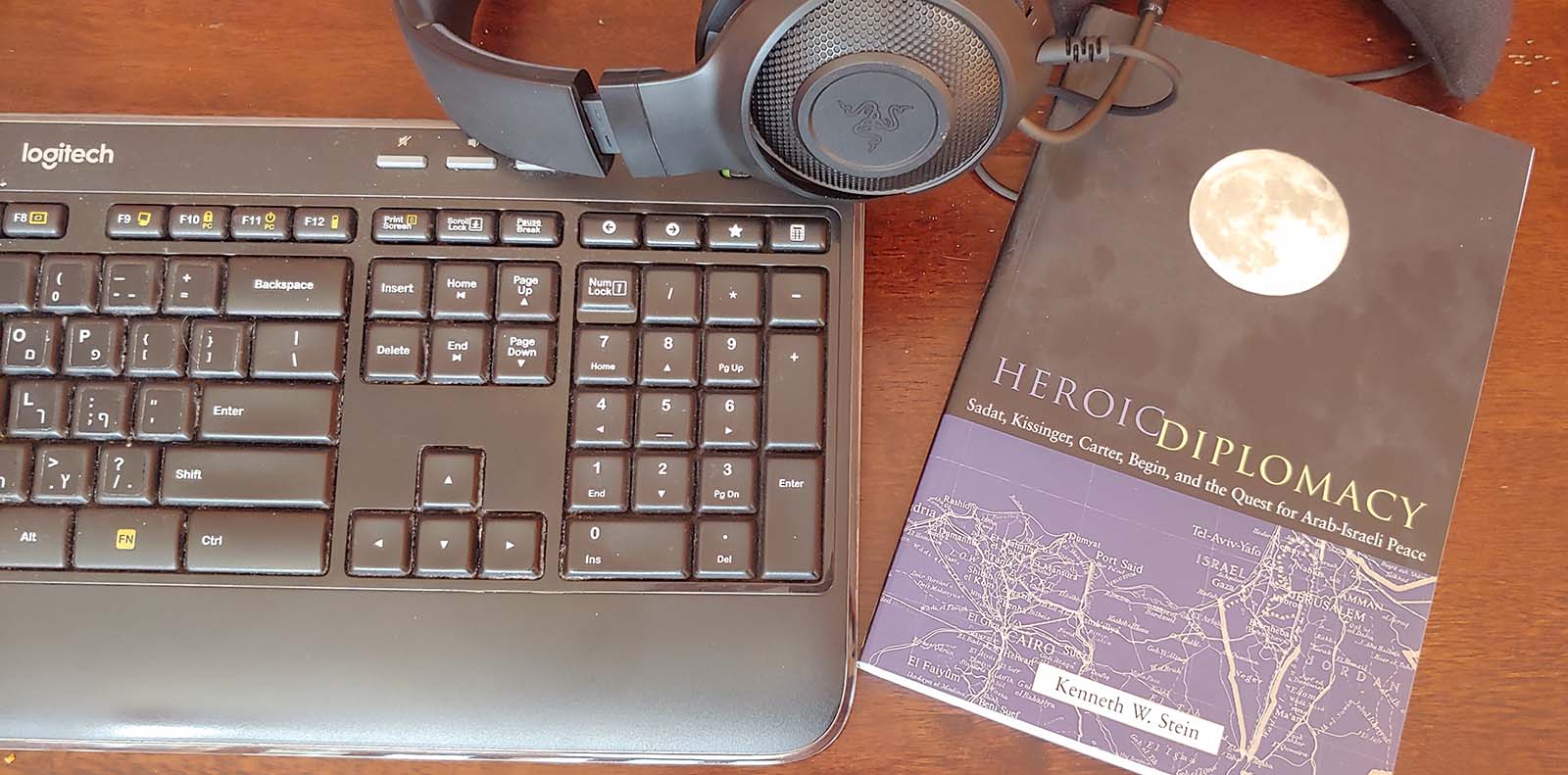
Wendy Kalman, November 30, 2021
As a researcher at the Center for Israel Education, I review and correct interview transcripts. CIE founder and Chief Content Officer Ken Stein interviewed nearly 90 diplomats, politicians and others in preparation to write his 1999 book, Heroic Diplomacy: Sadat, Kissinger, Carter, Begin, and the Quest for Arab-Israeli Peace. He wants this treasure-trove published on our website. Listening to interviews with historical figures directly involved with that quest for peace presents me — and will present the world when it is done — an opportunity to learn from the most primary sources possible.
The interviews I have reviewed so far not only show different slices of perspective on the same events, but also contain insights into the behind-the-scenes relationships of each. For example, Israel’s Syrian-born Ambassador to Egypt Moshe Sasson, whose foreign service spanned half a century, shared his personal interactions and insights into, among others, Palestinians who came to the Lausanne Conference of 1949 (and whom he visited years later). And then there was the adviser on media and public affairs Dan Pattir, who served under Yitzhak Rabin and stayed on under Menachem Begin after the mahapach (upheaval) shifted Israel’s government right for the first time. Interviews with Begin’s director-general and later Ambassador to Egypt Eliyahu Ben Elissar, Ambassador to the U.S. Simcha Dinitz, and Director-General of the Ministry of Foreign Affairs Shlomo Avineri also provided different views from which to see history unfolding.
From the United States’ side, I’ve listened to Hermann Eilts, who served as ambassador to Saudi Arabia and later to Egypt, and Michael Sterner, who was the director of Egyptian affairs prior to becoming ambassador to the United Arab Emirates. Their vantage point on Henry Kissinger’s shuttle diplomacy was necessarily broader than that of either Israelis or Egyptians.
And then there was Ken’s far-reaching interview with Tahsin Bashir, an Egyptian spokesman whose nonpartisan views and access offered him the ability to share astute insights into people, policy and process.
Interviewees analyzed Sadat, Begin and Kissinger’s personalities, as well as offered opinions on everyone from Jimmy Carter, Golda Meir and Moshe Dayan to Egyptian Deputy Prime Minister Hassan Tuhami and Egyptian Foreign Ministers Mohamed el-Gamasy and Ismail Fahmy. And all of it — all of it — was interesting to me.
The book weaves together written sources and interviews. But they do not live in separate channels in an author’s mind. When Ken tells one interviewee what others have said about someone or some event, or when he shares that there are questions for which no one has been able to give him a satisfactory answer, I have a glimpse of how laborious — and fascinating — it is to bring to life in full what happened and to analyze its meaning. The wider the perspective and more information available, the fuller and more accurate the picture that is being formed.
On a personal note, I have been digging into genealogy the past year or two, and along with building out the family tree, I’ve supplemented with period nonfiction books and documentaries, each of which contributes to making real for me the circumstances of long-past family members’ lives.
In some ways, this experience is similar. But here I am not only seeing layers being added to a picture, but also seeing the pigment in the paints.
It is not lost on me that man’s desire to arrive at a singular, objective narrative is one thing. Writing history is another. And the “small t” truths I am listening to are incredible, whether these history makers are speaking about people like Sadat, Begin and Kissinger, about conferences and meetings in Geneva, Ismalia, Cairo and Camp David, or about events like Begin’s visit to Israel and Israel’s withdrawal from Sinai. As the transcripts are posted to the CIE website, I urge people to take a look. The best way to understand the interaction between Israel and the Arab world in that era when peace was pursued is to hear from the mouths of those with direct knowledge.
Originally tape-recorded and at some point transferred to digital files, these recordings from 1992 and 1993 certainly present me with challenges. Ambient noise, voices that fade in and out, different accents, words in different languages — these are all challenges. But software, patience and Google Translate each help me face them head on.
Another aspect challenges me as well, perhaps not in the sense of obstacles but in the need they present for me to think, and that is the aspect of the content itself, about the peacemaking process and about learning history.
